#songbirds
Note
are otters or songbirds more jewish i have an argument to settle
Rating: Songbirds, but there's a makhloket
The majority opinion holds that songbirds are more Jewish than otters, as it is written, “Even the sparrow has found a home and the swallow a nest for herself in which to set her young near Your altar, O LORD of hosts, my Sovereign and my God” (Psalms 84:4). There are many other texts that mention songbirds throughout the Tanakh; there are zero results for “otter” as referring to the animal on Sefaria in our sacred texts.* Thus, the simple answer is that songbirds are more important in Judaism, and therefore more Jewish, than otters. Additionally, medieval Jewish illumination such as the famous Bird's Head Haggadah depicts Jews with human bodies and the heads and beaks of birds, indicating a close connection between Jews and birds:
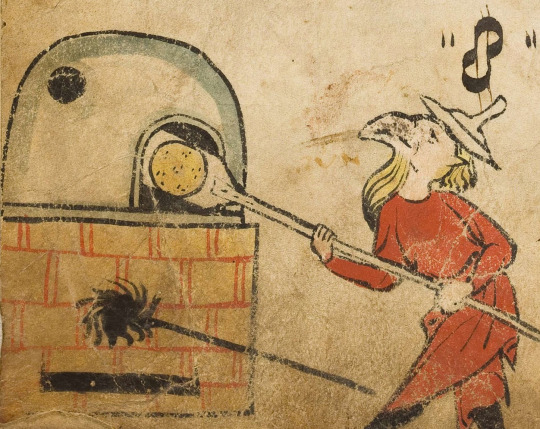
However, as is Jewish tradition, we preserve the following minority opinions as well:
Otters are more Jewish than songbirds: Songbirds were created on the fifth day of creation, while otters, like humans, were created on the sixth day. Therefore, otters are closer to humanity, and Jews are part of humanity, so otters are more Jewish than songbirds. (Genesis 1:20-24) Furthermore, this photo from the Cincinnati Zoo speaks for itself:

Both otters and songbirds are equally Jewish: Psalms 50:10-11 reads “For Mine is every animal of the forest, the beasts on a thousand mountains I know every bird of the mountains, the creatures of the field are subject to Me.” Clearly, this covers both otters and songbirds, so both are equally Jewish. Furthermore, otters and songbirds both look extremely cute in yarmulkes, which may not be halakhically relevant but feels important to state nonetheless.

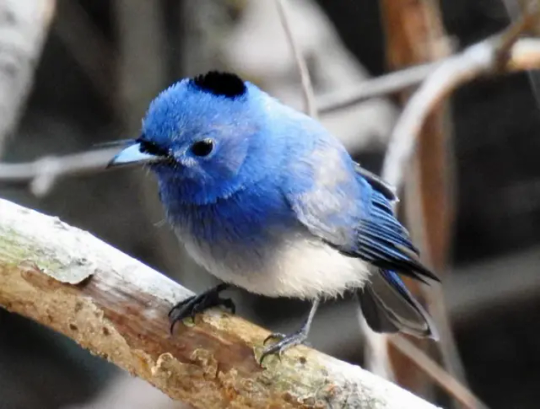
Neither otters nor songbirds are Jewish; however, they are righteous gentiles under the Noahide covenant: To be Jewish means to be bound by the Abrahamic covenant in relationship with the Holy One. As animals are neither descended from Jewish parents nor have the agency to choose to be bound by the covenant made between God and Abraham, as human converts do, neither otters nor songbirds are Jewish**. However, following the great flood, God said to Noah, “I now establish My covenant with you and your offspring to come, and with every living thing that is with you—birds, cattle, and every wild beast as well—all that have come out of the ark, every living thing on earth. (Genesis 9:9-10). This covenant, symbolized by the rainbow, is God’s commitment to every living thing (clearly including both songbirds and otters) that God will never flood the Earth again-- something every one of us can support.

*(okay, there are three results: one is a typo for “utter” as in “our otter ruin” and the other two are German).
** My cat, however, is definitely Jewish.
306 notes
·
View notes
Text
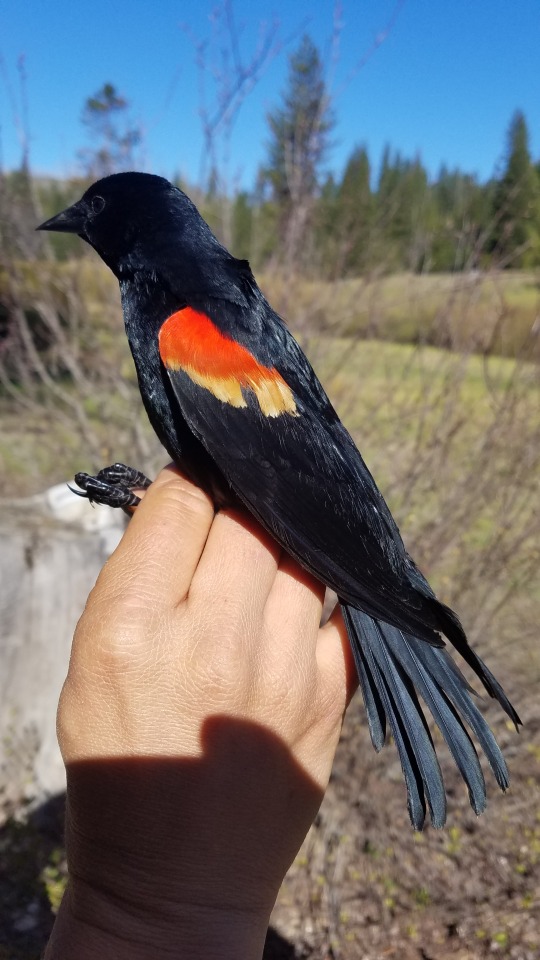
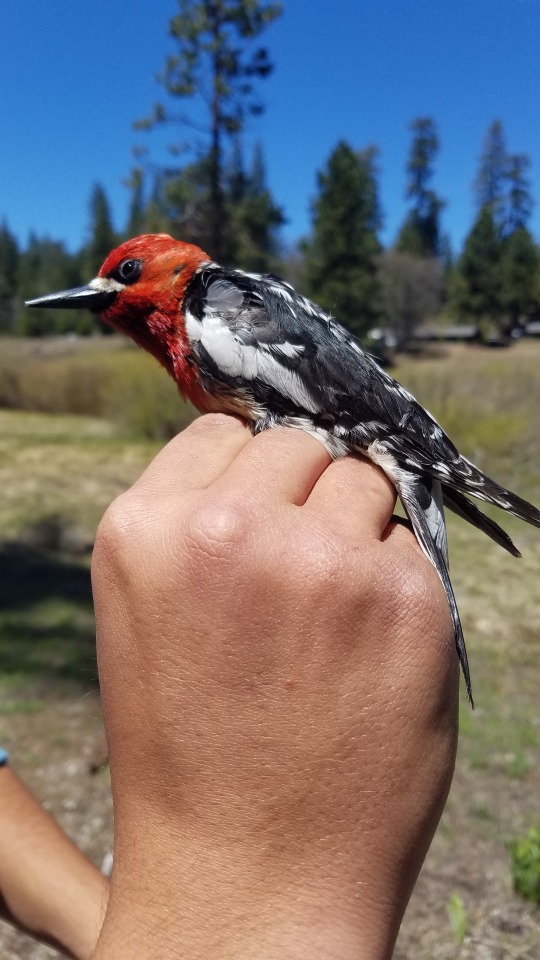

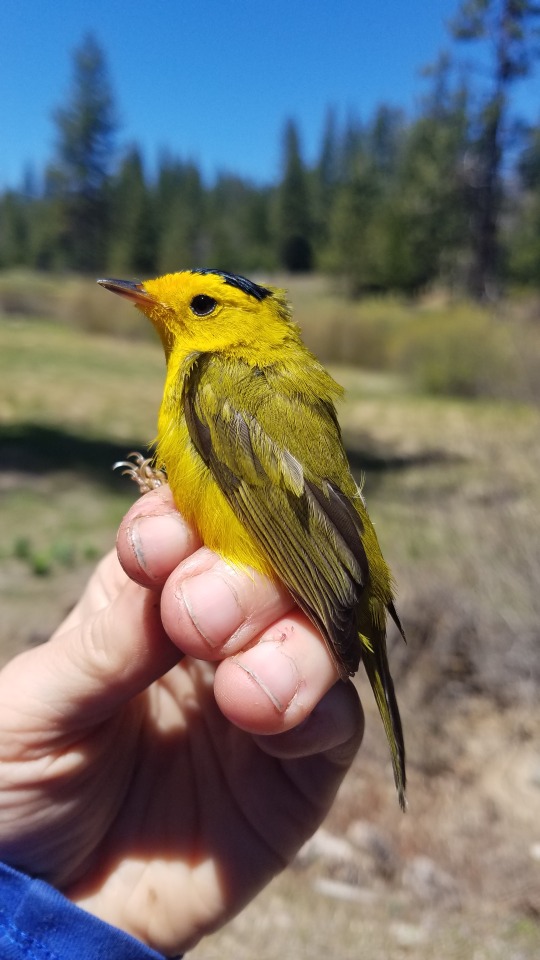

Hey all! I don't typically post my photos here but heck, I should. This is just a heads up that you won't see much from me for the next couple weeks as I go on my yearly fieldwork trip to Yosemite to train our summer bird banding crew in how to run their stations. These MAPS (Monitoring Avian Productivity and Survivorship) stations are part of a long-term (30+ years!) monitoring project that has resulted in some amazing science, from teaching us about how climate change affects birds at different altitudes to setting new longevity records (we have a 20-year old woodpecker!).
All of this is done through The Institute for Bird Populations. Go check out the website and learn more about what we do for birds around the world!
#birdblr#ornithology#birds#birb#borb#songbirds#red-winged blackbird#red-breasted sapsucker#macgillivray's warbler#wilson's warbler#yosemite#yosemite national park#science#wildlife conservation
785 notes
·
View notes
Text


re-christening my old art blog with my bird photography, starting with this song sparrow borb
56 notes
·
View notes
Note
So I was wondering, if a young apprentice who hadn’t quite learned all their songbirds yet accidentally caught one, how much trouble would they be in? Like are they expected to know pretty fast what is or isn’t considered a songbird?
No trouble! They did not know! It's actually their mentor that would get in trouble, if any.
But I do think that the accidental catch of a songbird can be a really unintentionally traumatic experience. Most of the time when this happens, it's because of enthusiasm and excitement. The apprentice feels proud! They did it all on their own!! They run to their mentor with the body of their prey, and...
All the pride is draining from their face. Their eyes are glittering with horror and sorrow. There's a long, pungent silence, and the apprentice can feel something is very, very wrong.
The vast majority of the time, this is the prompt for a somber talk about Myyrn, the concept of Threat Level. It is a mentor's responsibility to raise an honorable Warrior, to bring this adolescent from kithood to adulthood. As far as their Clan is concerned-- it is the Mentor's fault that their young apprentice did not know it sooner.
Abusive mentors are rare. Most mentors are good cats, and were explicitly given an apprentice to pass on what they know. This COULD be abused (Ashfur for example would probably freak out on poor Lionpaw), but for the most part..?
Accidents happen. Tragedies happen. No one gets "in trouble" for a situation like this, unless it happens a lot and they didn't report it.
A common 'teaching moment' for this situation is to hold a small vigil for the animal. It won't be eaten as prey, but buried like a clanmate. Sometimes it's used as an excuse to walk around the territory and listen to songbirds like the one that was killed (or, if there are no others, explain its absence).
So, in a nutshell... no, they aren't supposed to get in trouble for something they didn't know. The situation is treated like a tragedy; and the heaviness of this moment is used as a VERY important learning experience.
NOTE: Please understand songbirds are killed during starvation scenarios. This assumes there's no outstanding circumstance and was just an apprentice's mistake.
134 notes
·
View notes
Text

Completed American songbirds cross stitch kit. This is a dimensions standard collection kit & it took approximately 130 hours to complete.
#craft#crafts#sewing#stitching#maker#dimensions#cross stitch#embroidery#traditional#handcrafts#hand embroidery#hand sewing#american songbirds#songbirds#bird feeder#bird feeder cross stitch#dimensions cross stitch#cross stitch birds#completed project#cross stitching
163 notes
·
View notes
Text
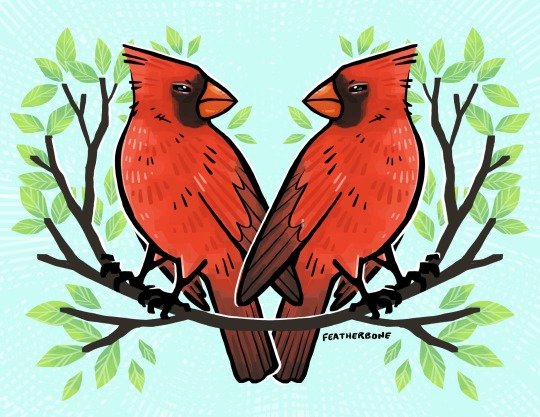
Cardinals :-)
[ID: a symmetrical illustration on a blue background of two red cardinals perched on a branch with green leaves, looking sternly at each other. End.]
196 notes
·
View notes
Photo
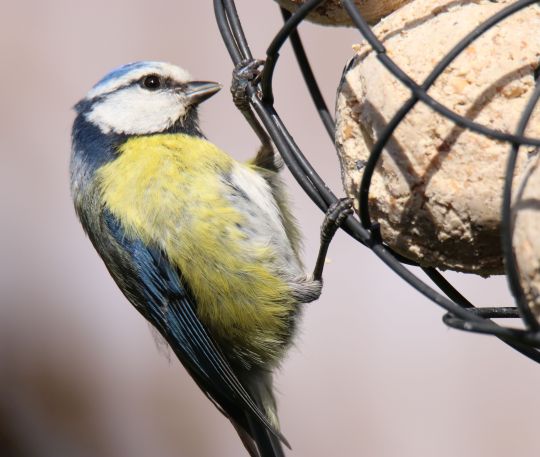
Blaumeise (parus caeruleus)
Blue t.i.t.
395 notes
·
View notes
Text

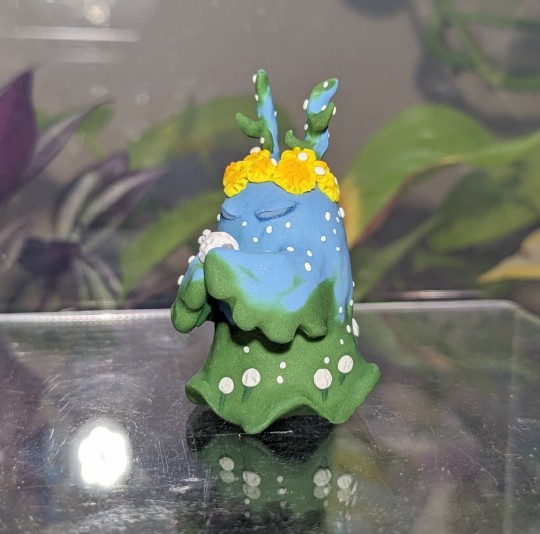




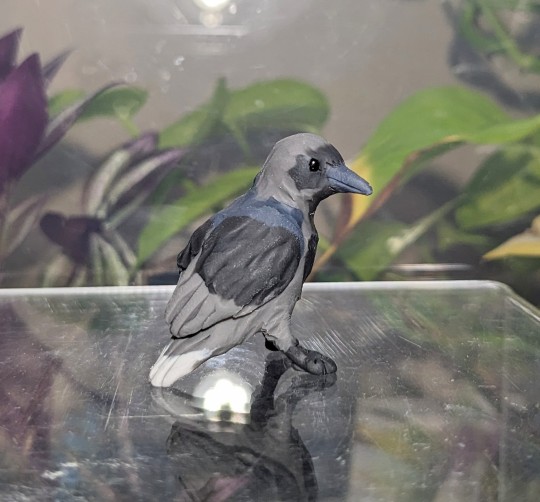

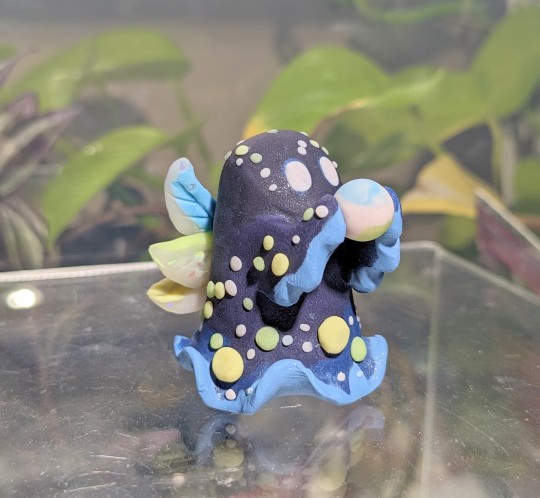

All these good birbs, as well as a few others that went past the image limit, are currently looking for their new flock, as well as two ghosts (Fairy Ghost and Dandelion Ghost) who need a new place to haunt.
Both ghosts feature glow in the dark bits!
The birds, from top to bottom, are a Gray Jay, a Mountain Bluebird, a lil white duck, a Morning Dove, a common Rock Pigeon, a gray Crow, a little white hen, and a White Faced Whistling Duck. :) good birds all!
If you'd like a beast or a ghost, please check out Bittythings and Beasts.
#birds#ducks#chickens#songbirds#pigeons#jays#ghosts#my art#crows#wildlife#polymer clay#cute art#kawaii#miniatures
57 notes
·
View notes
Photo

Animals of the Photo Ark - Australian Zebra Finch (Taeniopygia castanotis)
Family: Estrildid Finch Family (Estrildidae)
IUCN Conservation Status: Least Concern
Note - Male on the left, female on the right.
Named for the black-and-white stripes seen on the necks of males and the tails of both sexes, the Australian Zebra Finch is one of Australia’s most abundant and widely distributed songbirds. Highly gregarious, they typically live in large flocks containing hundreds of individuals, although on occasion they may be spotted alone or in pairs. Australian Zebra Finches are most common in arid inland regions of Australia and rarest near the coast - they are typically found near bodies of water where plants and insects are most abundant. They forage on the ground and feed primarily on fallen seeds, but will also take small insects or pull developing seeds off of plants using their beaks. This species has no specific breeding season, but after forming a pair a male and female will stay together for life and will mate following periods of heavy rainfall. Both parents work to care for the chicks, which develop very quickly (reaching sexual maturity between 70 and 80 days after hatching.)
-----------------------------------------------------------------------------
The photo above is from the National Geographic Photo Ark, and was taken by Joel Sartore. To see more of Sartore’s amazing work and support the Photo Ark, follow the link below:
https://www.nationalgeographic.org/projects/photo-ark/?locale=en
#australian zebra finch#zebra finch#birds#bird#songbirds#australian wildlife#zoology#biology#Ornithology#animal#animals#joel sartore#wildlife
429 notes
·
View notes
Text
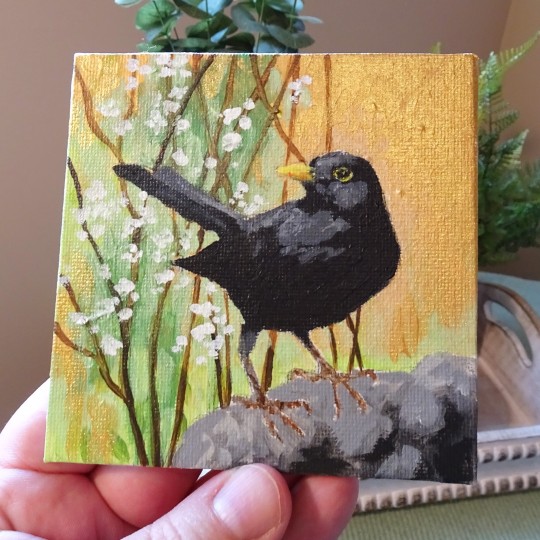
Original miniature Acrylic paintings - British Song Birds
I have four of these still available in my shop, visit my shop to see them all, little birds on 10 x 10cm canvas boards, a great little gift idea for a birdwatcher…
https://theweeowlstudio.etsy.com/listing/1550146782
or you can search for 'TheWeeOwlStudio' on Etsy.
#birds#British Birds#Songbirds#Birdwatching#Bird Art#Bird Painting#miniature#painting#artwork#Scottish Artist#Made In Scotland#etsy#art
24 notes
·
View notes
Text
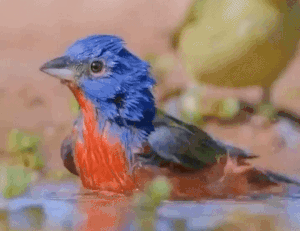
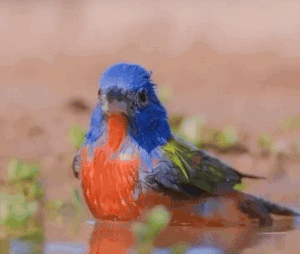
Beautiful Painted Bunting having a bath. Feel free to use, just link back to this post!
x
#stimboard account#stimmy#stim gif#stim#not a board#luminary stimboards#bird#birds#bird gif#birds gif#bird stim#bunting#bunting gif#bunting stim#bunting bird#painted bunting#painted bunting gif#painted bunting stim#songbirds#songbird#animal#animals
20 notes
·
View notes
Text
The sounds of spring outside my window while I work :)
12 notes
·
View notes
Text
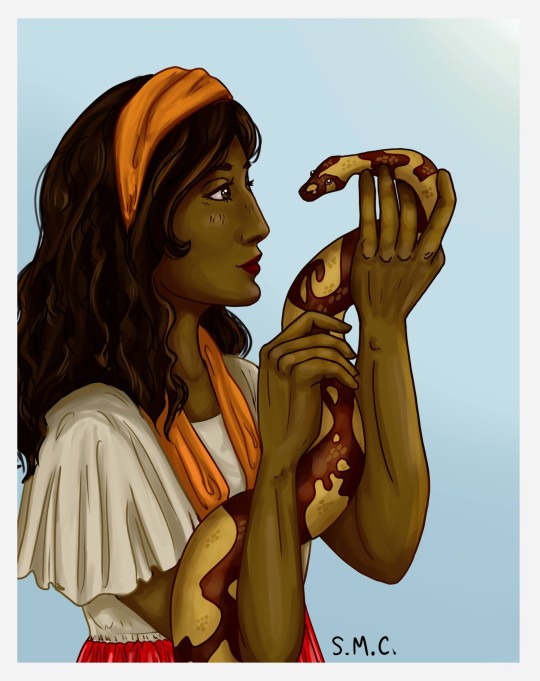
Lucy Gray again 🐍
#art#digital art#digital artist#artist#artwork#artists on tumblr#digital drawing#art account#snake#a ballad of songbirds and snakes#songbirds#snakes#lucy gray baird#lucy gray#tbsos#tbosas
77 notes
·
View notes
Text
Down with the "crows/ravens are creepy unnatural omens of evil to come" trope. Enough.The owls and vultures too
From now on, all creepy unnatural birds shall be portrayed by cute chirpy species such as canaries and robins or ducklings or fancy elegant ones like peacocks and birds of paradise and swans.Imagine how creepy giant a flock of birds of paradise hanging out in an abandoned Scottish castle would be compared to crows.Crows are just...normal.Omniously crowing peacocks or chirping songbirds.Instead of vultures circling our dying hero imagine a huge cloud of blue tits.Swans sitting in a tree outside a cursed house, hissing.Villain fussing over a cage with bright-coloured,suspiciously bloodthirsty canaries or budgies ( I have budgies.Evil budgies aren't even that much of a stretch, trust me😂). Ever-growing horde of fuzzy yellow chicks following you everywhere with unnatural persistence.Now that's terrifying.
#creepy birds#rereading Wheel of Time and once again annoyed by the *Eeevil Carrion Eaters* trope 🙄🙄🙄 at least have them be shrikes for once.#tropes#pet peeve#horror tropes#fantasy tropes#like i get where this is coming from but Come On#birblr#corvidae#ravens#crows#vultures#owls#songbirds#canaries#swans#peacocks#birds of paradise
100 notes
·
View notes
Text

Completed little gardener chickadee. How cute is it?!
#craft#crafts#sewing#stitching#animals#embroider#traditional#traditional crafts#hand embroidery#cross stitch#embroidered#birds#chickadee#cottage crafts#bird#songbirds#songbird#cottage aesthetic
51 notes
·
View notes
Text
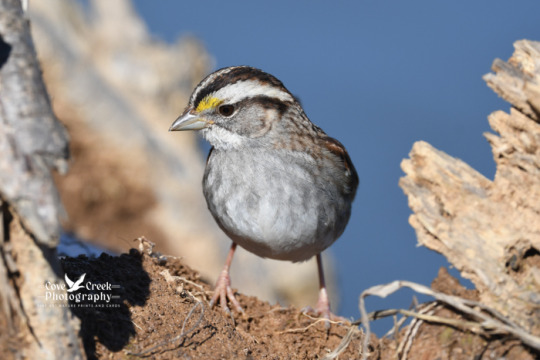
Hello, White-Throated Sparrows!
The hummingbirds have migrated south, ducks are flying overhead, and dark-eyed juncos (Junco hyemalis) began arriving a week ago. Today I spotted a couple of white-throated sparrows. All of this signals that winter is knocking at our door.
Sparrow identification can be tough. Many of our native sparrows look very similar, and often there is no glaring difference in behaviors. However, the white-throated sparrow (Zonotrichia albicollis) may be considered an exception to this identification dilemma.
The time of year is a good clue. White-throated sparrows are migratory, and spend the non-breeding season (late fall and winter) in Arkansas, as well as the rest of the eastern and south-central United States. Their pattern of arrival tends to be what I have observed over the course of the last week. White-throated sparrows start filtering in not long after the arrival of dark-eyed juncos.
Feather color and pattern also aid in identification. A white throat patch (hence the name, white-throated sparrow) between the bill and the gray breast is very apparent. In the "white-striped" form of this species, a white patch on the side of the head highlights a bright yellow spot located between the base of the gray bill and the eye. On the other hand, there is a "tan-striped" form of white-throated sparrow, and the yellow spot is less noticeable and difficult to see because the white patch near the eye is absent. Additionally, a white and black striped crown will be observed in the "white-striped" form, and a brown and black striped crown is present in the "tan-striped" form. I have observed and recorded both forms in Arkansas, in the field and at home. Anecdotally, the "white-striped" form is more prevalent every year.
The call of the white-throated sparrow is described as a song sing a that sounds like "Oh-sweet-canada-canada" or "Old-Sam-Peabody-Peabody". One thing is certain. If you hear its beautiful and distinct call, you'll know white-throated sparrows are around without ever seeing them!
#bird migration#bird photography#birdwatching#nature photography#wildlife photography#photographers on tumblr#songbirds#bird identification#winter#sparrows
20 notes
·
View notes